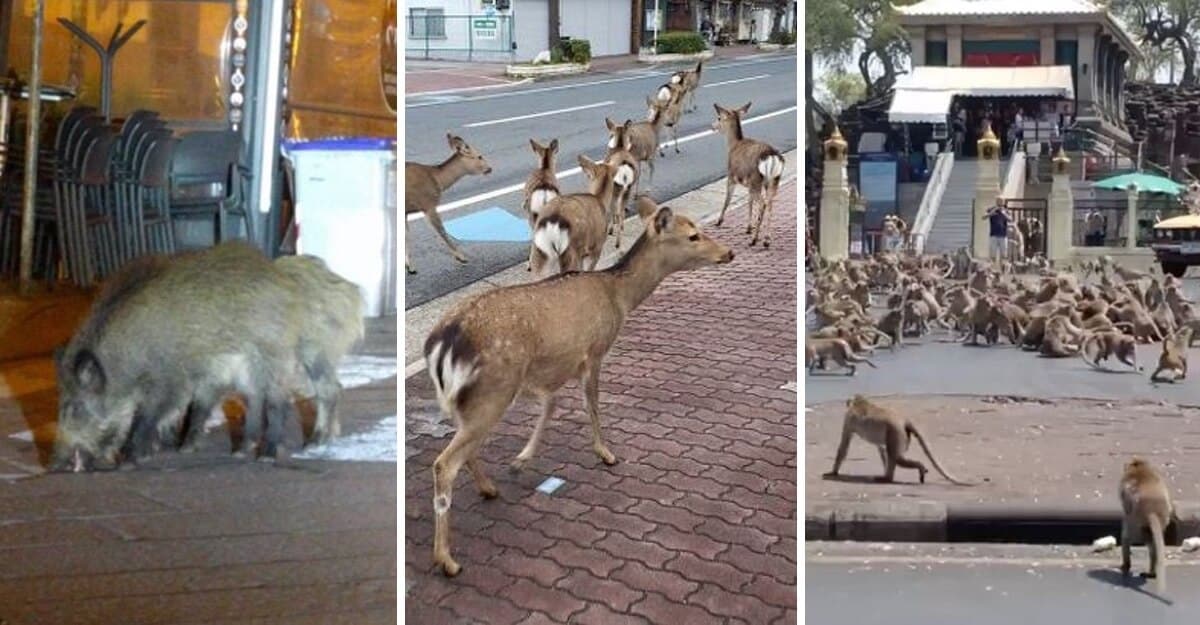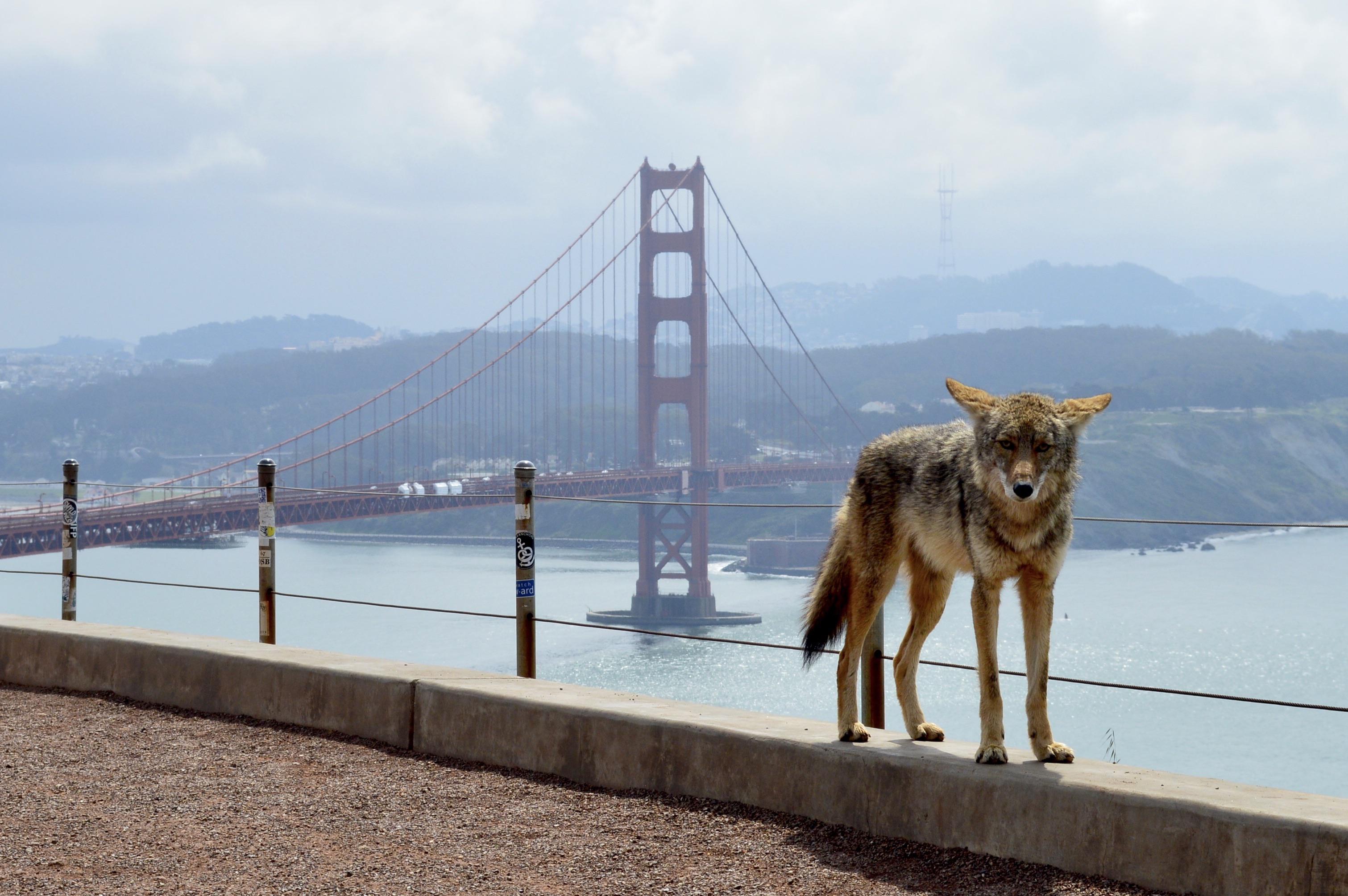A new Israeli study examined whether wild animals really "took over the city" during the Corona period. According to the study, it is the humans who changed their habits, not the animals
By Neta Nissim, Zwata - news agency for science and the environment
At the beginning of the corona crisis, when the streets were almost empty of people, we often saw in the media stories about wild animals taking advantage of people's seclusion in their homes and "taking over" the cities. Deer were seen wandering in the public gardens in Jerusalem, goats were seen on the boardwalk in Eilat, ducks strolled to their pleasure in the streets of Paris, wild boars descended from the peaks that surround the city to Barcelona, and flocks of wild turkeys gathered in California. But does the popular and utopian claim about the return of animals to all corners of the country have any basis, beyond anecdotes in the press? A new Israeli study casts doubt on this.
in the study in question, conducted by doctoral student Reut Vardi, Dr. Oded Berger-Tal and Dr. Uri Roll from the Department of Desert Ecology at the Desert Research Institute of Ben-Gurion University and recently published in the scientific journal Biological Conservation, the researchers examined observations of wild mammal species that appeared in the urban environment, conducted by private individuals near their place of residence.
The observations were recorded using the citizen science platform iNaturalist: one of the most popular nature applications in the world, which is used by over 3 million people from all over the world, and which was created as a joint initiative of California Academy of Sciences and of the organizationNational Geographic. The application allows the general public to record and share observations of animals through it and the information collected through it is transmitted (after its reliability and quality are checked by volunteer citizens) to a community of over a million scientists and naturalists, who use the data in their research and practical work for the natural environment.
In the new study, the researchers chose to focus on North America, given the large amount of sightings reported on the app in this part of the world. They focused on five charismatic species of mammals that live on this continent: American black bear, bobcat, coyote, moose, and cougar. "There are animal species that we probably won't see many reports on in the system, but charismatic species, like the ones we studied in the study, attract and interest people more, so we will also expect them to be reported more in the app," says Vardi. "Mostly these are large mammals and predators."
The researchers compared the reports on the locations of the mammals during the first months of the corona epidemic: March-July 2020, as reported in the application, to their locations in the same months in 2019-2010. The researchers focused their search on 40 selected urban districts, each of which recorded at least 10 sightings during these years. According to the researchers, the data included a total of 7,278 reports, 1,957 of which were received in 2020.
To characterize a certain area as urban, the researchers used an international satellite system that measures the intensity and composition of artificial lighting in the night sky. "Cities constitute A major source of light pollution, and therefore the more we saw that an area was brighter, the more urban it was defined," says Verdi. The researchers also checked whether there was a change in the behavior of the human population during the period of the closures in the examined areas, in order to understand how such a change could affect the observations, this with the help of Google's leadership index, which includes information on trends in the movement of people from place to place (as part of the assessment of the impact of social distancing measures during the Corona period).
It is human behavior that has changed
The research findings were surprising, and less "juicy" than we would tend to think. "We saw that in 2020 there were indeed more sightings of the five mammal species tested in urban areas compared to the previous decade, but we realized that there was a perception problem in the data," says Vardi. "Since this is the Corona period, when people were more limited to their immediate environment, most of the reports were accordingly also in urban areas, near the residential environment." That is, although there were more reports of sightings inside the cities, the animals are not the ones who changed their behavior and came more to our areas - but we, who left less of our immediate environment and paid more attention to the animals that come to it.

As part of the study, the researchers checked whether the five species tested during the epidemic explored urban areas they had not visited before. "All these species explored new areas in 2020, but apart from the cougar, the animals were actually observed in less urban areas compared to previous years - that is, they were actually 'more urban' in the past," says Verdi. Despite the increased reports of sightings of the species tested within the cities, it was found that these are not new areas, but areas that these species had already visited before the Corona period.
The only exception among the species tested was, as mentioned, the cougar, which indeed visited the cities more during the corona. "The cougar is probably in a more initial process in terms of entering cities compared to the coyote in North America or the jackals in Ramat Gan, for example," says Verdi. "It is a more fearful species by nature, and it admittedly entered the cities even before the Corona period, but it did avoid the human environment. Probably in her case, the decrease in human activity during the Corona virus allowed her to explore additional living areas within the cities."
There is nature outside the house
As the human population focuses more on living inside the cities and many cities expand their area more and more, Different species of animals choose take advantage of what cities have to offer them. In the city the wild animals can find food, a stable climate, and a lower chance of being eaten by another animal. Of course, this is not all wild animals, and the vast majority of animal species are affected, in many cases fatally, by the expansion of cities, which reduce and often eliminate their habitats. "The entry of new species into cities is an ongoing process," says Verdi. "There are more adaptable species, it is easier for them to take advantage of the opportunities in the cities."

The new study demonstrates the potential and importance thatCitizen science, in which ordinary citizens volunteer to assist in scientific research. Today there are many examples of research projects in which citizen science plays a significant part, such as the Israeli applicationJellyfish in the people", which gathers reports on jellyfish sightings and creates a map of the distribution of jellyfish along Israel's coasts.
"Beyond that, for us, this is a study that is an opportunity to arouse the public's attention to animals - and especially to urban nature," says Verdi. "The corona virus has allowed us, in its own way, to remind the public that there is nature outside the home, which can be learned about and which must be preserved. Especially after the quarantine period, we understand how important nature is, not only for the animals, but also for us - humans", she concludes.
More of the topic in Hayadan:
